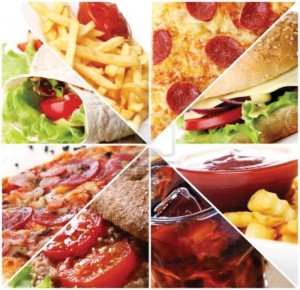

1) Food allergies
2) Food Intolerance
3) Food Sensitivity
Food allergies are immune system reactions to an antigen on the food product. This antigen is usually a protein. This is why most true allergic reactions to food involve foods that have protein. The most common allergic foods are: Nuts, Soy, Wheat, Eggs, Peanuts, Tree nuts, Milk, and shellfish. These are the Big Eight.
Food allergies are like other allergies in that they can cause allergic-like reactions. Runny nose, itchy eyes, rash, bronchitis, headaches, asthma and the routine systemic allergic reactions. They also cause intestinal reactions like: gas, bloating, diarrhea, constipation, and cramping.
A true allergic reaction to wheat products is called Celiac disease and is easily diagnosed with blood tests. They can also be confirmed by an allergist with skin testing. The best treatment of food allergies is to avoid the food product.
Food Intolerance is usually the lack of ability to fully digest or process a food. The most common food intolerance is to Lactose which is the sugar in milk products. Fructose the sugar in fruit and fruit juice is also common. Dysfunction of the gallbladder can also cause a fatty food intolerance. The artificial sweeteners are made so you do not digest them, enabling them to cause intolerance also.
The reaction to food intolerance is an intestinal one. Gas, bloating, diarrhea, constipation, and the like are the usual reactions. Avoidance of the products can help, but sometimes you can add enzymes to the meal that will assist in digestion.
Food Insensitivity is a little more complicated and can include any reaction to a food or food product. The reaction could be like an allergic one or maldigestive one, and could be to any number of food products. The largest group of products that fall into this classification are the food additives and preservatives. Sulfates, salicylates and nitrates are the major contributors.
If you can identify the food product that causes the reaction, then it is easy to avoid. The problem becomes when you cannot identify the cause. When this is the problem you can pursue several options:
1) Avoid and then re-challenge with the food. This is stopping the suspected food for 2 weeks and then re-challenge with it and see what the reaction is.
2) Elimination diet. This is a bit more complicated. You fast with just water for 2 days and then start with a simple diet of rice and turkey for several days. Then reintroduce food one at a time and note the reaction. It would be best to keep a journal when doing this.
3) Allergic testing with intradermal, scratch and sublingual testing.
The caveat is that if you are having intense symptoms with weight loss, bleeding weakness, or other unusual symptoms you should be seen by a specialist as soon as possible.
 Southwest Florida's Health and Wellness Magazine Health and Wellness Articles
Southwest Florida's Health and Wellness Magazine Health and Wellness Articles

